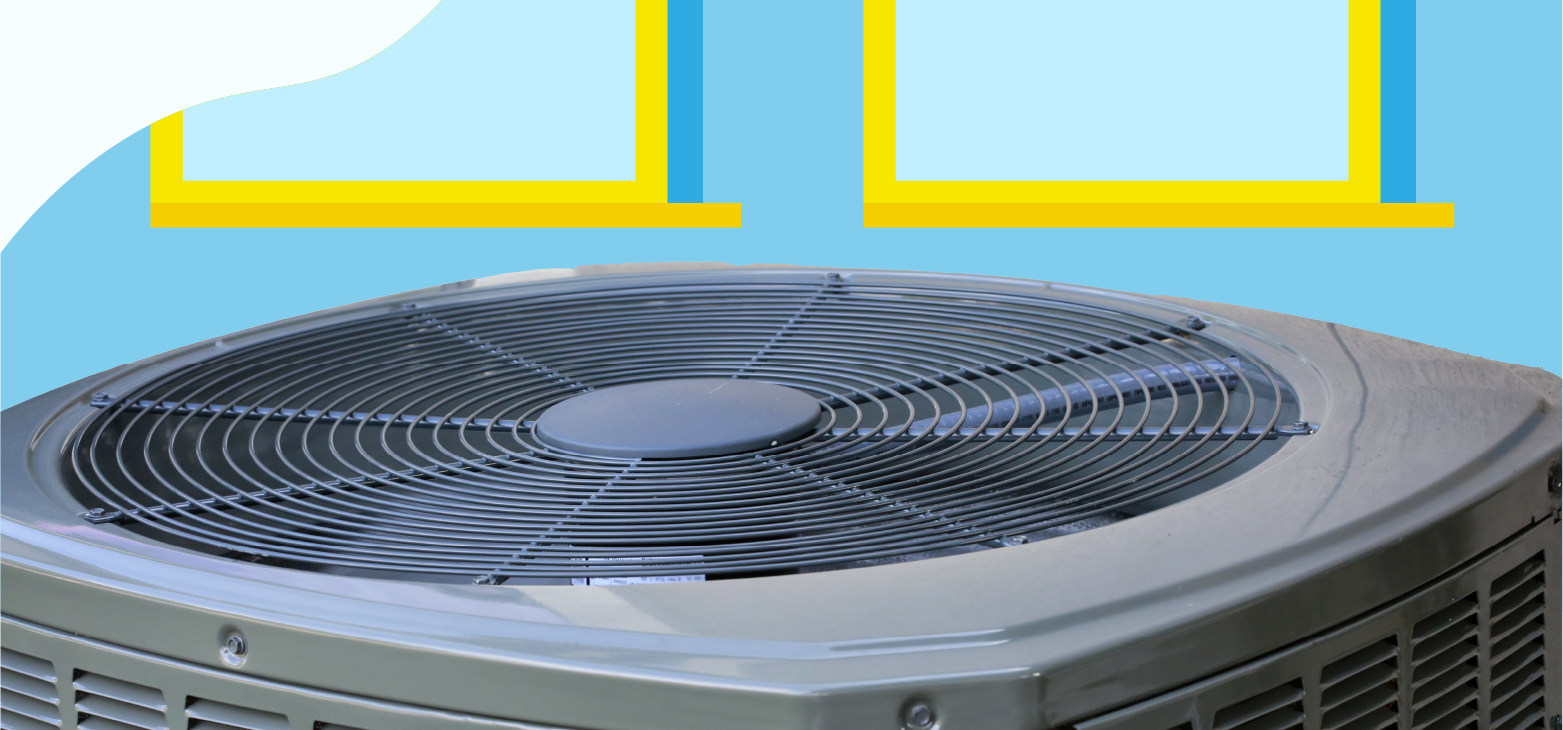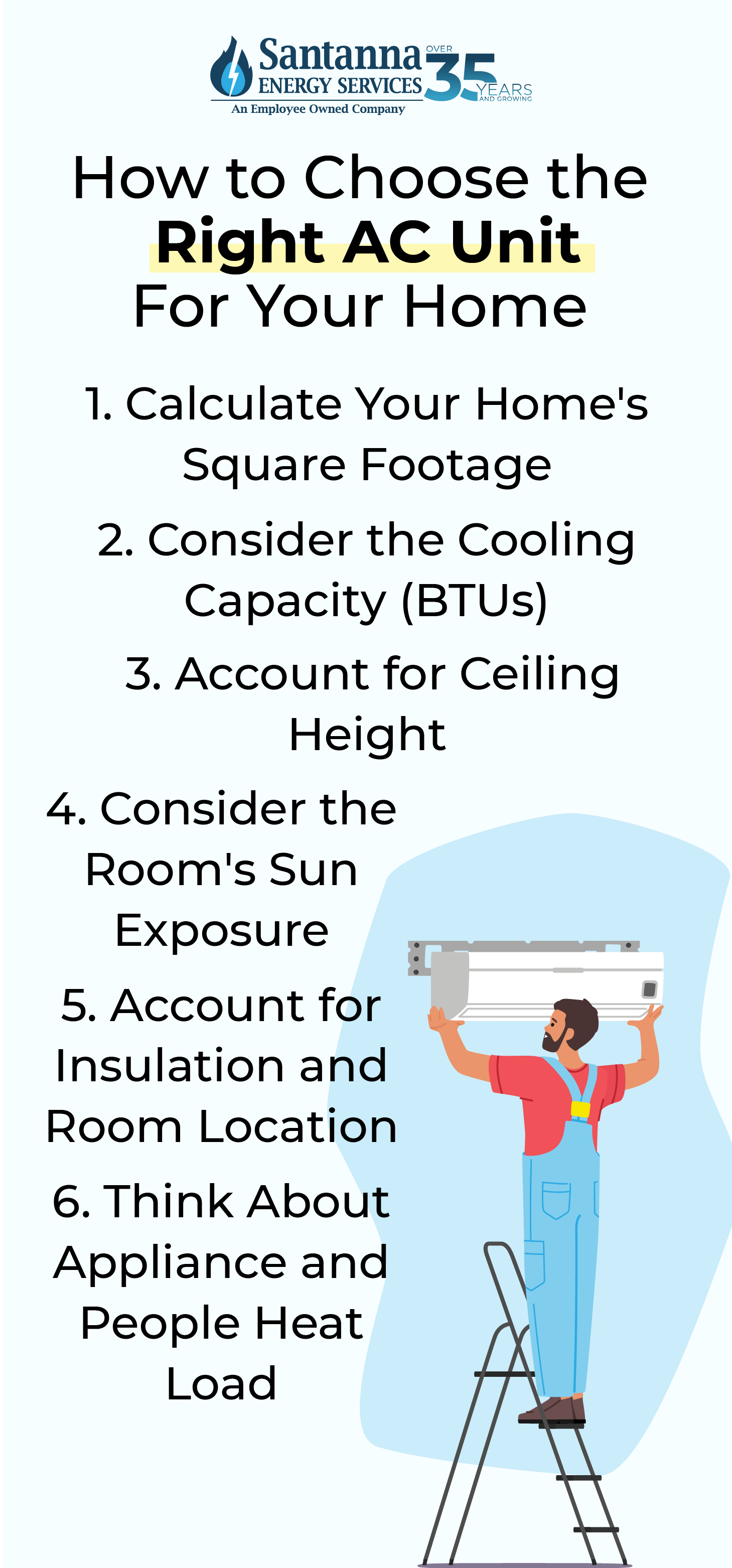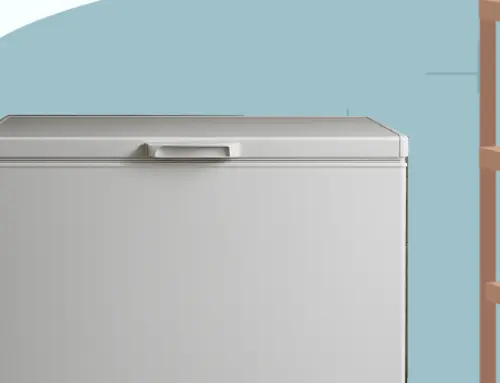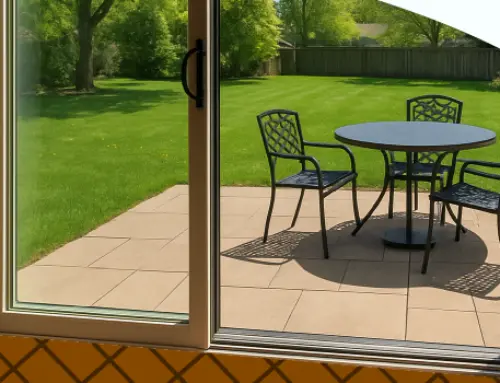Why is My AC Running But Not Cooling?
by Tyler Castle
17.4 min read

When summer temperatures rise, the last thing you want is an air conditioner that’s running but not actually cooling your home. This common issue can lead to discomfort, high energy bills, and even long-term damage to your HVAC system if not addressed properly.
When your AC is on the fritz, it might be difficult to determine exactly what the issue is since problems can come from anywhere. We’re here to help as we break down the most obvious reasons why your AC is running but not cooling and how to troubleshoot these issues. Let’s get started!
Common Reasons Why Your AC Is Running But Not Cooling
Determining why your AC unit is running but not cooling isn’t the easiest thing to figure out without the right knowledge. Several factors could be causing the issue, ranging from simple fixes like a clogged air filter to more complex problems such as refrigerant leaks or compressor failure. Knowing what causes your AC to run but not cool can help you troubleshoot the problem and determine if you need professional help.
Here are some of the most common reasons your AC is running but not cooling:

1. Incorrect Thermostat Settings
Before assuming there’s a major issue, check your thermostat settings. Your if your AC unit is running but not cooling, it might be because you’ve set the wrong thermostat settings. If your unit is set to “fan” mode instead of “cool,” this means the AC is running but not actively cooling the air.
To check if your settings are correct, ensure that your thermostat is set to “cool.” This will kick on your AC unit to begin cooling your home. Be aware that if you’ve set your thermostat to a temperature warmer than your room’s temperature you might not feel a difference and think there’s something wrong with your AC unit; be sure to set your unit at a cooler temperature.
If you frequently experience temperature inconsistencies, consider upgrading to a smart thermostat, which can optimize cooling efficiency and help lower energy bills.
2. Dirty or Clogged Air Filters
Your AC filter plays a critical role in ensuring proper airflow and efficiency. A clogged or dirty air filter can restrict airflow, making it harder for your AC to cool which might make you think there’s issues with your AC.
A dirty air filter can also cause your evaporator coil to freeze, further reducing cooling capacity; this means your AC will run but not cool. Worst of all, a dirty AC filter can lead to higher energy consumption as your AC struggles to push air through which can lead to higher electricity bills.
To troubleshoot this problem, check your filter and replace it if it’s clogged with dust and debris. As a general rule, change your filter every 1-3 months, depending on usage and environmental conditions.
3. Blocked or Dirty Condenser Unit
Another reason your AC is running but not cooling might come down to blocked or dirty condenser unit. The outdoor condenser unit is responsible for expelling heat from your home. If it’s covered in dirt, leaves, or debris, the system won’t be able to release heat properly, leading to poor cooling performance.
To fix this issue, start by turning off the power to your AC and remove any visible debris around the unit. For extra cleanliness, use a hose to gently clean the condenser coils and trim any plants or objects blocking airflow within 2-3 feet of the unit to get your unit going again.
4. Frozen Evaporator Coil
If your AC is running but not cooling, check if there’s ice buildup on the indoor evaporator coil. A frozen coil prevents the system from absorbing heat properly and this can happen for a variety of reasons. An evaporator coil can freeze from restricted air flow from a dirty filter or blocked air vents. In the same way, refrigerant leaks your AC unit on low for extended periods can freeze your coils.
To troubleshoot this issue, start by turning off your AC and letting the ice thaw. After it’s had the chance to thaw after a few hours, check your air filter and vents to ensure proper airflow. If the issue persists, call a professional to check for refrigerant leaks.
5. Refrigerant Leak
Refrigerant is the substance that absorbs heat from indoor air and cools it within your AC unit. If there’s a leak in your refrigerant, your AC won’t be able to cool effectively leading to your AC unit to run but not cool your home. Signs of low refrigerant levels in your AC unit include warm air blowing from vents, hissing or bubbling noises near the AC unit, and ice formation on refrigerant lines.
If your AC unit has low refrigerant levels, it likely means there is a leak, or the system was undercharged during installation. Running an AC with low refrigerant can damage the compressor, leading to costly repairs. Refrigerant leaks should only be handled by a licensed HVAC technician, as improper handling can be dangerous. So be sure to get a hold of a professional to fix this problem.
6. Leaky or Blocked Ductwork
If your AC is running but not cooling, check for leaky ducts which can cause cooled air to escape before reaching your living spaces. Blocked or leaky ductwork can lead to can reduced airflow with your home feeling warmer than what your thermostat is set to.
Signs of duct issues include uneven cooling throughout your home, higher-than-normal energy bills, and dirt and dust accumulation near vents. Be sure to look for visible gaps, holes, or disconnected sections in exposed ductwork which can also lead to a running but cooling AC unit.
To fix this issue, it’s best to have a professional duct inspection. For a DIY solution, try using a sealing mastic sealant or metal-backed tape (not regular duct tape) to seal small leaks which can improve AC performance and efficiency. For blocked air ducts, remove visible debris or dust buildup in vents and registers or schedule a professional cleaning.
7. AC Unit Is Undersized or Oversized
An improperly sized AC unit can struggle to cool your home efficiently leading you to think there’s issues with your unit when there’s not. Undersized ACs run constantly but never fully cool the space while oversized ACs cool too quickly but cycle off before dehumidifying, leading to a clammy indoor environment.
If your AC size doesn’t match your home’s cooling needs, a professional HVAC assessment can help determine the right unit. As a general rule of thumb, 20 British Thermal Units (BTUs) are required per square foot of living space.
8. Faulty Compressor or Mechanical Issues
If your AC is running but not cooling, this could mean that you have a faulty compressor or deeper mechanical issues. The compressor is the heart of your AC system and if it’s failing, the unit won’t be able to cool your home. Signs of a bad compressor include your AC unit making clicking or buzzing noises, warm air blowing from vents despite the unit running, and tripped circuit breakers.
The best way to handle a faulty compressor or underlying mechanical issues in your AC unit is to schedule an appointment with a professional technician that can diagnose whether repair or replacement is needed.
9. Excess Heat Load in the Home
If your home generates excessive heat, your AC may struggle to keep up. Common causes of this include running appliances like ovens, dryers, and multiple electronics simultaneously, poor insulation or large windows with direct sunlight exposure, and too many occupants in one room generating heat.
Excess heat load can lead your AC to run but not cool because too much heat load can overwork the system, causing it to run continuously without effectively cooling your space. Reduce this load and get your AC unit running to its maximum by sealing air leaks, add weatherstripping, closing blinds and using ceiling or box fans to circulate air.
10. Sensor Issues (For Window or Ductless Units)
Many ACs have temperature sensors that regulate cooling cycles. If the sensor is misaligned or faulty, this can cause your AC to run but not cool your home. In the same way, a broken or disconnected sensor may cause the AC to run erratically or not adjust cooling as needed.
To troubleshoot this issue, first check the position of your sensor. The sensor should be near the evaporator coil but not touching it. If it’s bent or misaligned, carefully adjust it back into place. Gently wipe off dust and debris with a soft cloth or compressed air to improve accuracy on your sensor and keep the area around your sensor clear of obstructions for better performance.
11. Electrical Issues or Tripped Breakers
Your AC system relies on a stable electrical connection to power key components like the compressor, fan, and thermostat. If an electrical issue occurs, some parts of the unit may continue running while others fail —leading to a situation where the AC is running but not cooling.
If the breaker controlling the outdoor condenser unit trips, the fan inside may still run, but the compressor won’t be able to cool the air. Over time, electrical connections can loosen or get damaged, disrupting power to critical components like the compressor or thermostat. Blown fuses or a power surge can prevent your AC from cooling properly.
To troubleshoot tripped breakers on your AC unit, always start with checking the electrical panel for a tripped breaker and reset it if needed. If the breaker keeps tripping, this may indicate a deeper electrical problem requiring professional help. If you see burned wires or loose connections, turn off power to the AC and call an HVAC professional.
How Does Weather Affect AC Performance?
Weather conditions play a significant role in how efficiently your AC operates. When it comes to humidity, high outdoor temperatures make the AC work harder to cool your home. If the temperature is very high, the system may struggle to reach the desired indoor temperature. It’s recommended to keep your home’s humidity 30%-50% for optimal comfort and AC performance.
In the colder months, if the AC system has a heat pump (which works for both heating and cooling), it might struggle to produce enough heat during extremely cold weather. In such cases, the backup heating system may need to kick in, which can reduce energy efficiency.
Air quality factors also impact AC performance. High winds, dust storms, and pollen can clog air filters, restricting airflow and making the system work harder to cool your home. Additionally, heavy rain and storms can lead to debris buildup around the outdoor condenser unit, obstructing proper airflow and reducing efficiency.
Regular maintenance, such as cleaning filters and keeping the outdoor unit clear of obstructions, can help ensure your AC functions optimally in varying weather conditions.
Old ACs and Energy Savings
As an AC unit ages, its components begin to wear out, which can cause it to operate less efficiently. Older systems may use more energy to cool your home, leading to higher electricity bills.
Over time, common problems like refrigerant can leak from the system, reducing its cooling power. An older AC may not cool as effectively, causing it to run longer and consume more energy. If your AC unit is experiencing frequent repairs, this is a clear sign it might be time to replace your AC unit. In the long run, these ongoing expenses may add up and make it more cost-effective to replace the system instead of constantly repairing it.
Older units often use refrigerants like R-22 (Freon), which is harmful to the environment and being phased out due to its ozone-depleting properties. If your AC still uses R-22, it might be time to replace it with a newer, more environmentally-friendly model.
When to Replace an Old AC Unit
You should consider replacing your AC unit if your unit is over 15+ years old. The average lifespan of an AC unit is between 10-15 years. After this period, the system’s efficiency declines, and it’s often more cost-effective to replace it rather than continue to repair it.
If your energy bills have been rising despite using the same amount of cooling, it’s a sign that the AC is no longer running efficiently and might be costing you more than a new unit would. If your AC unit requires frequent repairs or parts replacement, it may be more economical in the long run to invest in a new system rather than continue fixing an old one.
If you’re wondering if a new AC unit can lower my electric bill, keep in mind that newer models are far more energy-efficient. Due to advances in technology, new AC units can save you up to 20% on cooling costs.
Is It Cheaper to Run AC on Fan Mode?
Using your AC’s fan mode instead of the cooling function can help reduce energy costs, but whether it’s truly cheaper depends on your cooling needs. In fan mode, the AC circulates air without actively cooling it, using significantly less energy than when the compressor is running.
This setting is useful for maintaining air movement and improving comfort when temperatures are mild. However, if it’s hot and humid, fan mode alone won’t lower the temperature, which might make you run the AC longer later to compensate for the heat buildup.
A good strategy is to use fan mode in the early morning or evening when outdoor temperatures are cooler and switch to cooling mode only when necessary. Ceiling fans and portable fans can also help circulate air, reducing the need for extended AC usage.
How Long Should an AC Run?
The ideal AC run time varies based on outdoor temperature, insulation, thermostat settings, and unit size, but in general, an efficient air conditioner should run in 15-20 minute cycles to maintain a comfortable indoor temperature. Typically, an AC uses between 3,000 – 5,000 watts of power per cycle.
To optimize efficiency, set your thermostat to a moderate temperature (such as 78°F in summer) and use a programmable thermostat to regulate cooling cycles. If your AC runs longer than 30 minutes at a time or struggles to cool your home, it may need maintenance or an energy efficiency upgrade.

How to Choose the Right AC Size for Your Home
Choosing the right size AC unit for your home is crucial to ensuring optimal cooling and energy efficiency. An underrated system will struggle to cool your space, running constantly and increasing energy bills, while an overrated unit will cycle on and off too frequently, leading to uneven cooling and higher energy consumption.
Here’s what you need to know to choose the right AC size for your home:
1. Calculate Your Home’s Square Footage
Start by measure the square footage of the rooms or areas you need to cool. You can do this by multiplying the room’s length by its width (L x W). For example, a 12 x 15-foot room is 180 square feet. Room air conditioners generally range from 5,500 to 14,000 BTU per hour with 20 BTUs for each square foot of living space.
2. Consider the Cooling Capacity (BTUs)
The cooling capacity of an AC is measured in British Thermal Units (BTUs). To cool your home effectively, you’ll need an AC with an appropriate BTU rating for the room’s size.
As general rule of thumb, here’s how many BTUs you’ll need to cool your space by square-feet:
- 100-150 sq. ft.: 5,000-6,000 BTUs
- 150-250 sq. ft.: 6,000-8,000 BTUs
- 250-350 sq. ft.: 8,000-10,000 BTUs
- 350-450 sq. ft.: 10,000-12,000 BTUs
- 450-550 sq. ft.: 12,000-14,000 BTUs
- 550-700 sq. ft.: 14,000-18,000 BTUs
- 700-1,000 sq. ft.: 18,000-24,000 BTUs
3. Account for Ceiling Height
Standard BTU calculations assume an 8-foot ceiling which is typical for many homes. However, if your ceilings are higher than that, your AC unit will need to work harder to cool the additional volume of air. For every foot above the standard 8-foot ceiling, you should consider increasing the cooling capacity by 10-20%. This adjustment ensures that the AC can efficiently circulate and cool the air in rooms with higher ceilings, preventing overworking the system and maintaining consistent temperatures throughout your space.
4. Consider the Room’s Sun Exposure
Rooms that get direct sunlight may need a larger AC. Rooms with large windows, skylights, or southern and western exposures tend to absorb more heat throughout the day, making them harder to cool.
If a room gets direct sunlight for extended periods, your AC unit may struggle to maintain a comfortable temperature. For rooms with lots of windows or if they face the sun most of the day, you might need an extra 10-20% more cooling capacity.
5. Insulation and Room Location
Take into account insulation. Well-insulated rooms require less cooling power, while poorly insulated rooms may need more. Also, if the room is located on the top floor or has poor airflow, you might need a larger AC.
6. Appliance and People Heat Load
Appliances and electronics in a room, as well as the number of people, can contribute to the heat load. More people or appliances will require additional cooling. Typically, add around 600 BTUs for each person who regularly occupies the space and 1,000-1,500 BTUs for large appliances.
7. Type of AC System
If you are choosing between a central air system or individual room units, ensure that the capacity of the units matches the specific needs of each room or the entire home. A central system might require more detailed calculations, including duct size and layout.
AC Maintenance Tips to Prevent Cooling Issues
Like any appliances within your home, you must maintain them to keep them performing to the best of their ability. Here are some of the most important tips you should utilize to keep your AC unit running in tip top shape:
- Clean or Replace Air Filters Regularly: Dirty filters block airflow, making the AC work harder. Check and replace or clean filters every 1-3 months, depending on use and the type of filter.
- Clean the Coils: Dust and debris can build up on both the evaporator and condenser coils. Clean them at least once a year to maintain efficiency and prevent cooling problems.
- Check Refrigerant Levels: Low refrigerant levels can reduce cooling power and strain the system. Have a professional check the refrigerant level and refill it if necessary.
- Clear the Condensate Drain: Ensure the condensate drain is clear to prevent water buildup, which could lead to mold growth or water damage. Check the drain line periodically for clogs.
- Inspect the Ductwork: Leaky ducts can cause your AC to lose efficiency. Inspect the ducts for leaks or blockages, and seal any gaps to prevent air loss.
- Clean the Outdoor Unit: Remove debris like leaves, dirt, or twigs from around the outdoor condenser unit. Ensure that there’s at least 2 feet of clearance around it for proper airflow.
- Check the Thermostat: Ensure your thermostat is calibrated correctly. If it’s not working well or reading temperatures inaccurately, it could lead to cooling issues. Upgrade to a programmable or smart thermostat for better control.
- Schedule Professional Inspections: Have a licensed HVAC professional inspect and service your system at least once a year, ideally before the cooling season starts. They can identify and fix potential issues early on.
- Lubricate Moving Parts: Regularly lubricate the motor and fan to prevent wear and tear. This helps to avoid mechanical failure and ensure smooth operation.
- Inspect Insulation: Make sure the insulation around the ducts, refrigerant lines, and attic is in good condition. Proper insulation reduces the workload on your AC and helps maintain consistent cooling.
- Check for Air Leaks: Seal windows and doors to prevent cool air from escaping and warm air from entering. Proper sealing helps the AC run more efficiently.
- Keep Vents Unblocked: Make sure furniture or other objects aren’t obstructing your vents. Blocked vents reduce airflow, causing the AC to work harder and potentially leading to uneven cooling.
- Monitor System Performance: Pay attention to any signs of reduced cooling power, unusual noises, or odd smells. If you notice anything unusual, call a professional to inspect the system.
- Change the Unit’s Settings for Seasonal Transitions: Adjust the thermostat settings as seasons change to maintain efficiency. In cooler weather, consider switching your system to “fan-only” mode to save energy.
- Ensure Proper Drainage of the Evaporator Coil: A clogged drain can cause water damage and lead to mold growth. Periodically check and clean the evaporator coil’s drainage system.
Understanding why your AC isn’t cooling can help you take quick action to fix the problem. Regular maintenance, proper troubleshooting, and professional inspections can keep your AC running efficiently. If persistent issues occur, consider consulting an HVAC expert to determine whether repair or replacement is the best option.
Tyler is an experienced energy professional, having worked for Santanna Energy Services, for the past four years. He is passionate about renewable energy and believes that diversifying the energy grid is the key to a sustainable future. Tyler is dedicated to supplying consumers with the best possible energy solutions and works diligently to make sure that Santanna can deliver the highest quality service.







